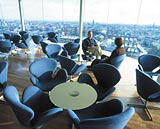The sticking point of slipping into ‘neutral’
Media neutral planning is fast becoming an industry buzz-term. Richard Clayton finds out what it means and how design can capitalise on this trend

Picture the scene: you’re there at the multidisciplinary brand guardians’ Christmas party, playing charades. It’s your turn next and the card reads ‘media neutral planning’. What do you do? Panic? Shrug your shoulders? Or fob it off on the smart-skirted whiz from the ad agency?
Faced with the latest marketing buzzword, any of the above might seem a rational response. Don’t worry if you have to improvise. Nobody can agree on a definition, as a report from accountant Willott Kingston Smith suggests. But that hasn’t stopped ‘media neutrality’ becoming ‘the debate of the moment’, according to Circus partner Dilys Maltby.
‘Everyone’s throwing themselves at that [media neutral] territory, but it’s not enshrined in the business model of most agencies,’ Maltby says. Many creative sectors, including design, still have an unsurprisingly ‘partisan view’ about the efficacy of their own offers.
Circus and other consultancies like Ergo, Factory Design and The Fourth Room (now defunct) were set up some years ago to provide this kind of ‘solutions-neutral’ advice, often commissioning other groups to do hands-on design work (DW 26 March 1999). But how relevant is media neutral planning to the design industry as a whole?
Its main drivers are media fragmentation and market saturation. In short, the brand noise that’s making consumers increasingly ‘elusive’. Ad agencies want to ‘add value’ at a time when the 30-second TV spot is no longer the be-all and end-all of ‘marcoms’. But don’t be put off by words like ‘media’ and ‘planning’, says WKS partner Amanda Merron.
She sees a ‘client-led shift’ towards media neutrality, pointing to big players like IBM, P&G, Unilever and Nestlé Rowntree, which are reorganising their internal practices around this principle. For Merron, it’s all about ‘the big brand idea’, so design and branding consultants have as much right to occupy the space as any other creative.
‘The rebranding of Yorkie with the ‘It’s Not For Girls’ strapline and the ‘Fourth Emergency Service’ positioning for the AA were both by Interbrand. The Guinness Storehouse in Dublin, another example of media neutral thinking, was by Imagination. It’s not a matter of brilliant account planning so much as a big creative idea. It offers [design consultancies] a route back to the client’s top table,’ she says.
As the WKS report maintains, the question is whether marketing services groups are as well equipped as they claim to provide impartial advice across creative disciplines. How big is the ‘reality gap’ between the media neutral pitch and its delivery?
Some executives surveyed by WKS believe there’s nothing new under the sun. Certainly, you’d hope the consumer has always been the focus of any marketing effort. But there are changes afoot.
Writing in the Financial Times last month, WPP boss Sir Martin Sorrell noted, ‘Great brands are increasingly being built in unconventional ways [and] people haven’t forgotten Orange was a design triumph before it was an advertising one.’ Two concerns for any client buying in media neutral fashion are: ‘How much should we spend on marketing communications? And through which mix of channels can we most rewardingly spend it?’
On the supply side, the debate seems ultimately to be about ‘who owns brand strategy’. Clients are looking for a ‘ringmaster to run the brand’, says Merron. Sometimes this is done in-house, but ad agencies and brand consultancies are lining up. But a client quoted in the WKS report hits a cautionary note, ‘I tend to go straight to management consultancies for strategic thinking, because I’ve found agencies offering strategy [are] more comfortable making quantitative/qualitative assertions than giving substantial, conclusive advice based on hard, in-depth data.’
Creativity, allied to an understanding of the business objectives, remains the most prized commodity. ‘Design is a powerful communicator’, says Maltby, particularly when asking ‘why should we be bothered with this [brand] in the first place?’.
Designers are well placed to benefit from media neutrality, she feels, because of their ‘open minded approach’. Whether this results in providing such a solution or being commssioned on that basis is another matter though.
Media neutrality represents a significant challenge to the way creative services are bought and sold. ‘The current system is sub-optimal,’ says the WKS report, ‘[but] there [is] a level of resistance from both client and agency personnel to changing a formula that’s worked in the past.’
Design’s operating profit margins (16.4 per cent, compared with 10.6 per cent for advertising) imply the sector is doing well enough thank you from its various specialisms. Might it risk spreading itself too thinly in the pursuit of a rather nebulous idea?
The answer probably depends on the scale of each business and the nature of its skills set. But, as WKS concludes, little progress will be made until creative ideas – rather than their execution – are properly remunerated. ‘Clients can’t have their cake and eat it,’ says Maltby. ‘Creative thinking has a value that should be recognised in project fees.’
If you’re asked for a ‘media neutral solution’ between now and New Year, here’s a clue how to act. It’s like the ‘integrated communication’ impression you used to rehearse, only this time in broadband.
‘Best of breed’ media neutral consultancies should offer four things, says WKS:
• 360-degree brand stewardship: delivering total communications strategies for client brands
• Cross-media competence: delivering at a high level across all media and communications channels
• Customer-centric thinking: getting inside consumers’ heads to understand their media preferences and how these interact
• Organisational support: a financial structure that allows objectivity, a culture that fosters creative co-operation and an investment strategy that broadens skills, improves process and upgrades planning tools
-
Post a comment




